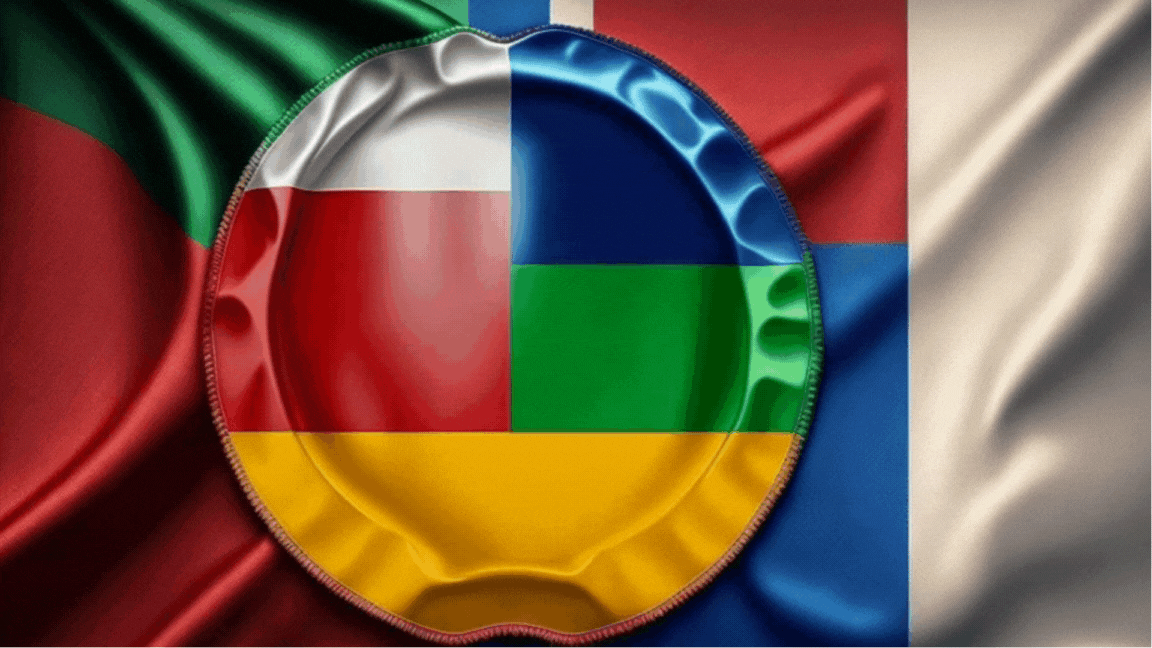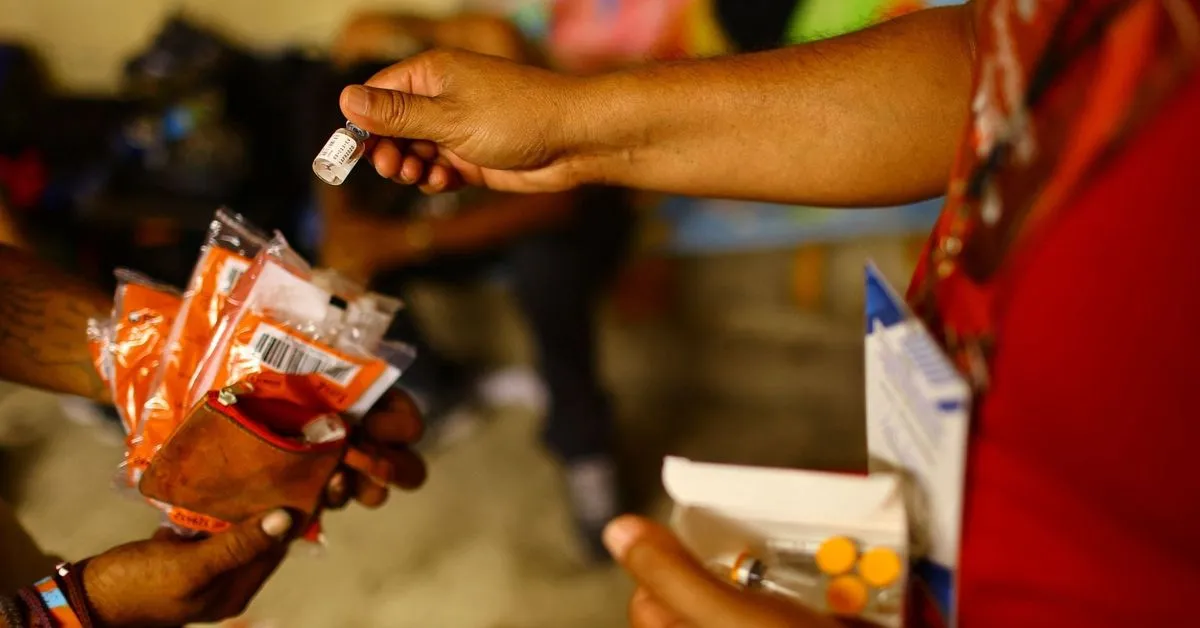
The fentanyl crisis at home
Usually, the problem of this opioid as it concerns Mexico is always reduced to how the U.S. market is supplied through the Aztec nation, and the dire and deadly consequences of its indiscriminate use there. However, this Reuters report—which has been on my waiting list for several days—offers a look at the negative effects of its consumption within Mexico. President Andrés Manuel López Obrador has tended to ignore the potential seriousness of the phenomenon, in his classic bid to relativize certain problems such as this or insecurity. The northern border states, particularly Chihuahua, Baja California, and Sonora, have been the most affected, although others such as the troubled Jalisco or Nuevo León already report a not insignificant incidence of the scourge. In the middle of last year, news broke of a test that found traces of fentanyl in 250 bodies—out of a sample of 1,100—sent to the morgue in Baja California's capital. One of the most difficult dynamics to tackle is that many people consume ecstasy, cocaine, or heroin shots containing certain levels of fentanyl not declared by suppliers.
 Source
SourceAnother study published last December showed that the opioid epidemic had taken hold in the capital itself. Fentanyl was found in 14 of 22 ecstasy samples belonging to men between 22 and 42 years old having a good time at a festival. "If these substances circulate at events where users are not consuming opioids, but stimulants and hallucinogens, basically MDMA or LSD, your expectations are not of overdose", said the leader of the research team. The article concludes that "fentanyl adulteration is no longer a phenomenon confined to the northern border of Mexico among vulnerable people who inject heroin or crystal meth, but has reached young people who use psychostimulants". The action of fentanyl "comes so fast that a person can die with the syringe in," warn experts, who stress that hundreds of Mexicans may be dying from overdoses without the latter being recorded as the true cause. Last year in Nuevo León—where 150 kilograms were seized in a year and a half destined for the United States—the Public Ministry reported that 180 corpses tested positive for fentanyl, in autopsies that are performed only in certain circumstances surrounding the death of each individual. More than 10 Mexican states lack equipment to detect the presence of fentanyl in corpses.
The fentanyl crisis has so far not swept Mexico like it has in the US, despite Mexico being a major trafficking hub for the highly addictive painkiller. But research by @Reuters shows the scale of consumption may be clouded by a lack of data and testing https://t.co/Va9jUl8IVo pic.twitter.com/0de14apDl8
— Reuters (@Reuters) February 20, 2024
Migration radar
The Biden administration donated to Panama tents and cots—valued at half a million dollars—to support the Central American nation's tough management of irregular migration. As of last week, more than 82,000 migrants have crossed the dangerous Darién Gap, the natural border between Colombia and Panama, this year. The figure shows a similar behavior to last year, by my count. It is reported that insecurity during the crossing has increased, with worrying reports of (more) sexual violations of migrants. The tension experienced by them led to a fight between two women that resulted in the burning of a shelter and a confrontation between migrants and authorities at the beginning of this month. There are more than 40 detainees because of these actions, mostly Venezuelans, who continue to be the group that is migrating the most. The NGO Médecins Sans Frontières has suspended its services in the face of an order from the Panamanian government, which is disputing its reports on the alleged sexual violence episodes as "incomplete". UNICEF has diplomatically rejected the Central American Executive's measure. According to MSF, in the Darién Gap there is "an act of sexual violence every three and a half hours".
The drama of traveling overcrowded
In the border state of Coahuila, some 200 migrants were "rescued" after an inspection by security forces of a truck, in whose box the Latin American dreamers were traveling. I mark the notion of rescue because what they all wanted in the first place was to reach the U.S. border and not be under the "protection" of the Mexican immigration authorities, especially being so close to the "land of freedom". But they were suffocating and asked for help from inside the box at a checkpoint. In the trailer traveled even entire families with babies in their arms in some cases.
Also in Mexico, on March 8, some thirty migrants who were deprived of their freedom were rescued at a hotel in Mexico City. Some of them, from India, Bangladesh, Nepal, and Cuba, had been held hostage since January waiting for their relatives to pay their ransoms. It is nonsense the time they were in this state, and so a flagrant show of the vulnerability of the irregular migrant throughout that race that for many begins in the dangerous Darién.
#AlMomento 🚨 Más de 200 migrantes que estaban hacinados en la caja de un tráiler fueron rescatados por diversas autoridades, quienes se encargaron de proporcionar agua a las personas, entre las que se encontraban niños.#Saltillo #Coahuila pic.twitter.com/R7urVgdfTF
— El Diario de Coahuila (@DiarioCoahuila) March 11, 2024
Organized Crime Observatory
Nearly 35 police officers have been killed since 2021 in the Mexican city of Celaya, Guanajuato state. Two were gunned down last February, with the daughter of one of them—as young as eight years old—falling victim as well to the hitmen. Across the state, some 60 police officers were killed in 2023. Celaya has distanced itself from AMLO's "hugs not bullets" policy, and to that extent, its security forces suffer the onslaught of the "Santa Rosa de Lima" cartel, which this AP cable calls "unthinkingly violent".
The Bolivian Special Force for the Fight Against Drug Trafficking intervened on Sunday at a clandestine airfield in the department of Beni, and also located there a shipment of some 415 kilograms of cocaine, along with two motorcycles, a firearm, and two pieces of communication equipment. No arrests were reported. The authorities opened a file to search for those responsible for the facilities and the shipment.
The Guatemalan Army and the Public Prosecutor's Office seized more than two tons of cocaine during the weekend in two vessels intercepted in the Pacific, arresting 11 individuals in the three operations that resulted in the respective maritime raids. Among those arrested were 6 Mexicans and 2 Ecuadorians. One vessel with an undetermined quantity of drugs sank during the intervention of the Guatemalan navy.
Paraguayan police arrested four nationals and seized just over 430 kilograms of cocaine that had Uruguay as a potential destination, along with a high-end pickup truck. This AFP cable, which reports on the operation, points out that a diplomatic controversy is active as a result of recent declarations by the Uruguayan president in which he criticized the decision or the capacity with which Paraguay or Bolivia face the scourge.
And this is all for our report today. I have referenced the sources dynamically in the text, and remember you can learn how and where to follow the LATAM trail news by reading my work here. Have a nice day.


